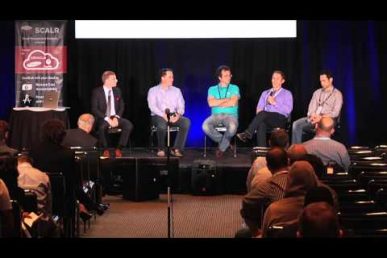OpenStack is a comprehensive platform that is also notoriously complex to manage and maintain. CloudOps is an emerging methodology that brings DevOps principles to the world of cloud computing. Integrating CloudOps principles into OpenStack operations can make things easier, by automating and streamlining processes, and improving the efficiency and agility of cloud infrastructure. This article explores how to integrate CloudOps methodologies to take OpenStack performance and manageability to the next level.
What Is CloudOps?
CloudOps is the blending of IT operations and cloud computing, resulting in an approach that allows businesses to manage their cloud-based services and applications effectively. Essentially, it is a new model of operating that necessitates a shift in mindset from traditional IT operations to the world of agile and DevOps methodologies. It involves a suite of practices, tools, and strategies designed to help organizations maintain and optimize cloud environments.
The CloudOps principles are rooted in the idea that IT operations can and should be automated, streamlined, and optimized in the cloud. By adopting a CloudOps model, businesses can leverage the flexibility and scalability of cloud platforms, reduce their IT costs, and achieve greater operational efficiency.
Key CloudOps Principles
Automation
The first key principle of CloudOps is automation. Cloud environments are vast and complex, and manually managing them can be a daunting task. Automation helps to reduce the burden of repetitive tasks, improve accuracy, and increase productivity.
Automation in CloudOps can range from simple tasks, like automatically scaling resources based on demand, to more complex ones, like infrastructure as code (IaC), where entire environments can be managed and provisioned through code. This not only reduces the possibility of human error but also allows for consistent and repeatable deployments.
Moreover, automation is an enabler of continuous integration and delivery (CI/CD), a practice that is becoming increasingly critical in today’s fast-paced business environment. By automating the build, test and deployment process, organizations can release new features and updates more frequently and with fewer errors.
Monitoring and Analytics
The second key principle of CloudOps is monitoring and analytics. In a cloud environment, where resources are distributed across various regions and services, keeping an eye on everything can be challenging. This is where monitoring and analytics come in.
Monitoring in CloudOps involves collecting and analyzing data about the performance and health of your cloud infrastructure. This can help you identify potential issues before they escalate into major problems.
Analytics involves making sense of the vast amount of data generated in the cloud. It can help you understand usage patterns, optimize resource allocation, and make data-driven decisions. Together, monitoring and analytics can provide you with valuable insights into your cloud operations and help you improve their efficiency and effectiveness.
Security and Compliance
CloudOps also emphasizes the importance of security and compliance, which is growing as more and more organizations move their sensitive data and critical workloads to the cloud.
In CloudOps, security is not an afterthought but a fundamental aspect of the operational model. This involves implementing best practices, such as encryption, access control, and threat detection, to protect your cloud resources.
Similarly, compliance in CloudOps involves ensuring that your cloud operations adhere to the relevant laws, regulations, and industry standards. This can be challenging, given the dynamic and distributed nature of the cloud. However, with the right tools and processes, it is possible to maintain a compliant cloud environment.
Cost Management
The last key principle of CloudOps is cost management. In complex hybrid cloud environments, without proper management, cloud costs can quickly spiral out of control.
Cost management in CloudOps involves continuously monitoring and optimizing your cloud spending. This can involve identifying and eliminating wasteful resources, optimizing resource allocation, and leveraging discounts and savings plans offered by cloud providers.
By keeping a close eye on your cloud costs and making proactive adjustments, you can ensure that your cloud operations are efficient and have a high return on investment.
Using CloudOps Principles to Improve OpenStack Management
Utilizing CloudOps principles can significantly improve the management of an OpenStack data center. Let’s see how.
IaC for OpenStack Management
Infrastructure as Code (IaC) is a key CloudOps practice that involves managing and provisioning computing infrastructure through machine-readable definition files, rather than physical hardware configuration or interactive configuration tools.
For OpenStack management, IaC can be implemented using tools like Terraform or OpenStack’s own Heat template language. By defining your infrastructure requirements in code, you can automatically set up and tear down OpenStack environments, manage network configurations, and handle storage requirements. This process eliminates manual intervention, reduces deployment times, and ensures consistency across environments.
CI/CD in OpenStack Operations
Continuous Integration and Continuous Deployment (CI/CD) streamline the process of updating OpenStack deployments and services.
In OpenStack, CI/CD can be integrated by using tools like Zuul for gating code changes, which ensures that only code that passes predefined tests is merged into the production codebase. Jenkins can also be employed for the automation of deployment tasks. This enables developers and operations teams to frequently update applications and services with minimal disruption, improving the software delivery process within the OpenStack ecosystem.
Monitoring in OpenStack Environments
Monitoring OpenStack environments entails tracking the performance of the OpenStack services, the underlying hardware, and the network infrastructure.
Tools such as Prometheus, Grafana, and Ceilometer can be employed to collect, visualize, and analyze metrics. For logs, Elasticsearch, Logstash, and Kibana (the ELK stack) are often used to centralize and scrutinize log data. Effective monitoring provides insights into system performance and helps in proactive troubleshooting, ensuring the reliability and stability of the OpenStack cloud.
Automation for Managing OpenStack Operations
Automation in OpenStack can be achieved using tools like Ansible, Puppet, or Chef. These tools can automate the deployment of OpenStack services, the configuration of host machines, and the orchestration of workloads. By scripting routine operations, automation reduces the scope for human error, improves efficiency, and allows the operations team to focus on more strategic tasks.
Ensuring High Availability and Disaster Recovery
High availability in OpenStack is about ensuring that the services are always accessible, even in the event of failures. This can be accomplished by using clustering for key services like Nova, Neutron, and Keystone, and by leveraging technologies like database replication. Disaster recovery strategies involve regular backups, and in more sophisticated setups, multi-region deployments to support failover capabilities. By planning for failures and having the right systems in place, businesses can ensure continuity of service.
Cost Management and Optimization
Cost management in OpenStack involves understanding the costs associated with the infrastructure, including hardware, energy, and network usage, and implementing strategies to optimize them. Techniques include rightsizing resources to match workloads, using reserved instances for predictable workloads, and automating the shutdown of unused resources. OpenStack’s Ceilometer provides data that can help in making these cost-effective decisions, as it collects and stores metering data relating to OpenStack services.
Apply Security Policies and Use Keystone for Identity Services
Implementing security policies in OpenStack involves defining rules that govern who can access which resources and what they can do with them. Keystone, OpenStack’s identity service, plays a crucial role in managing authentication and authorization. It integrates with existing backend services like LDAP or federation services to provide a single point of integration for identity management.
In addition, regularly applying security patches, conducting audits, and using SSL/TLS for encryption ensures communication remains secure and that the OpenStack deployment complies with security standards.
In conclusion, effectively managing OpenStack environments requires a robust approach that incorporates CloudOps principles. By adopting these CloudOps strategies, organizations can enhance the manageability, performance, and reliability of their OpenStack clouds, ensuring they meet the demands of today’s dynamic computing environments.
- Kubernetes Troubleshooting: A Practical Guide - May 21, 2024
- Overview of the OpenStack Documentation - March 18, 2024
- Refactoring Your Application for OpenStack: Step-by-Step - December 27, 2023

)










